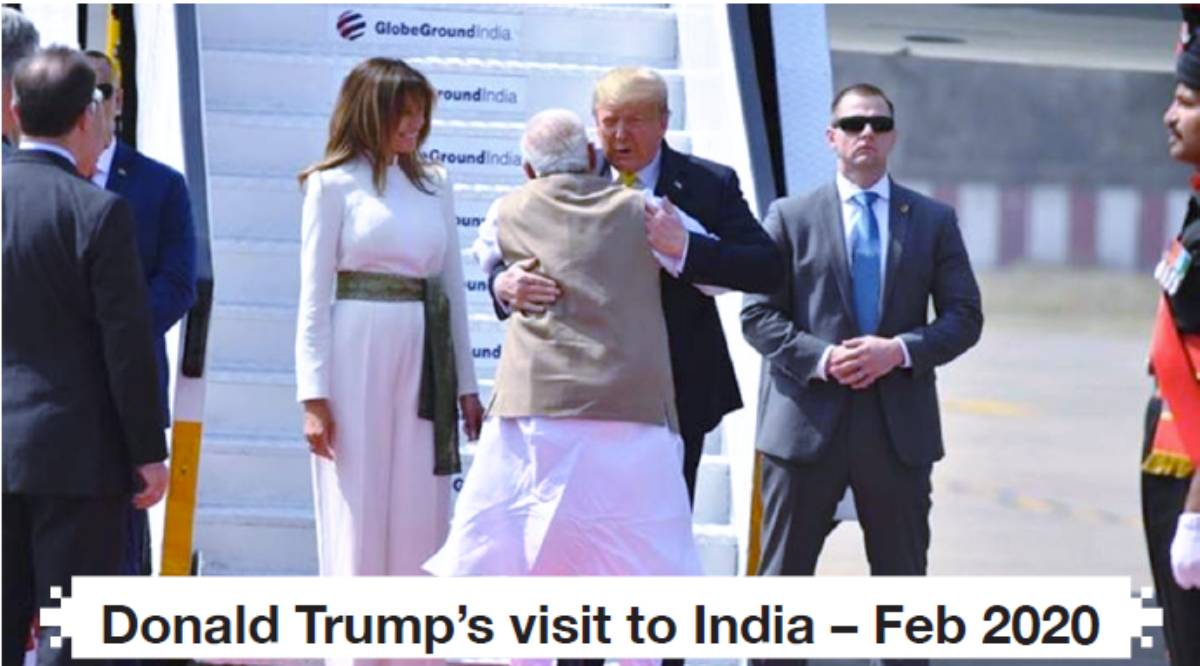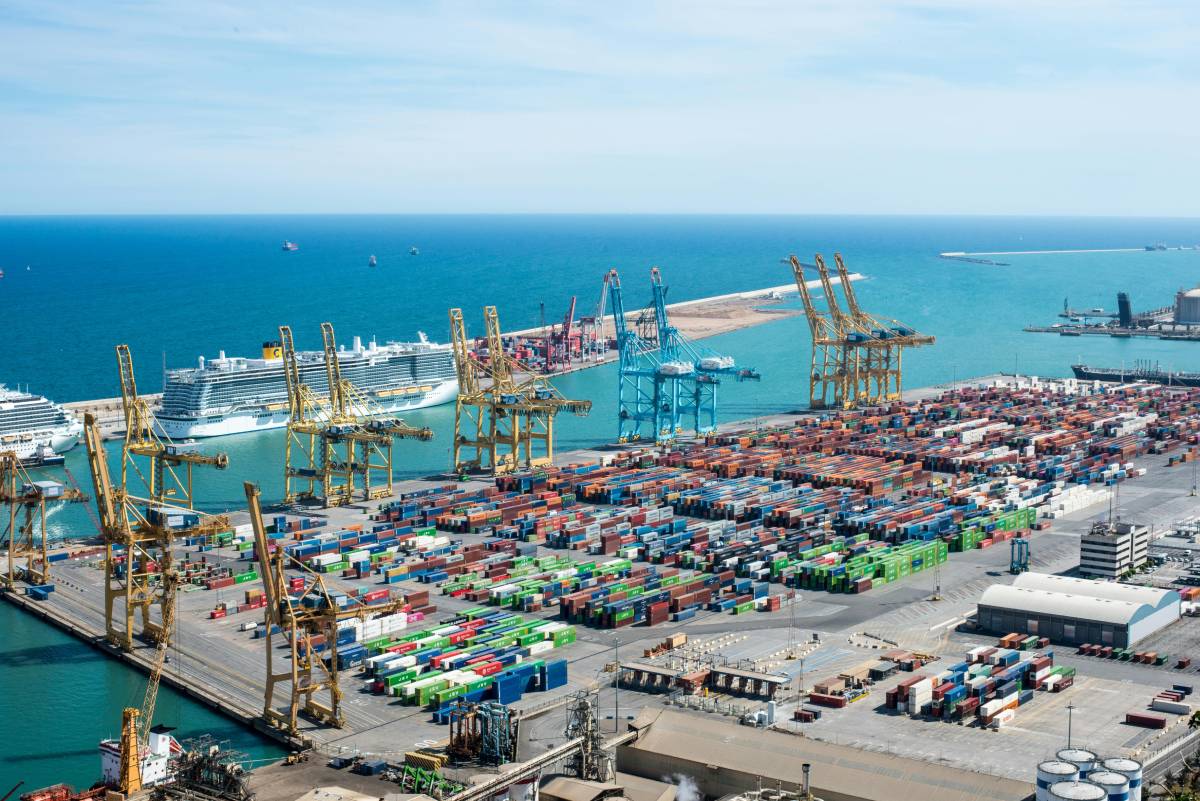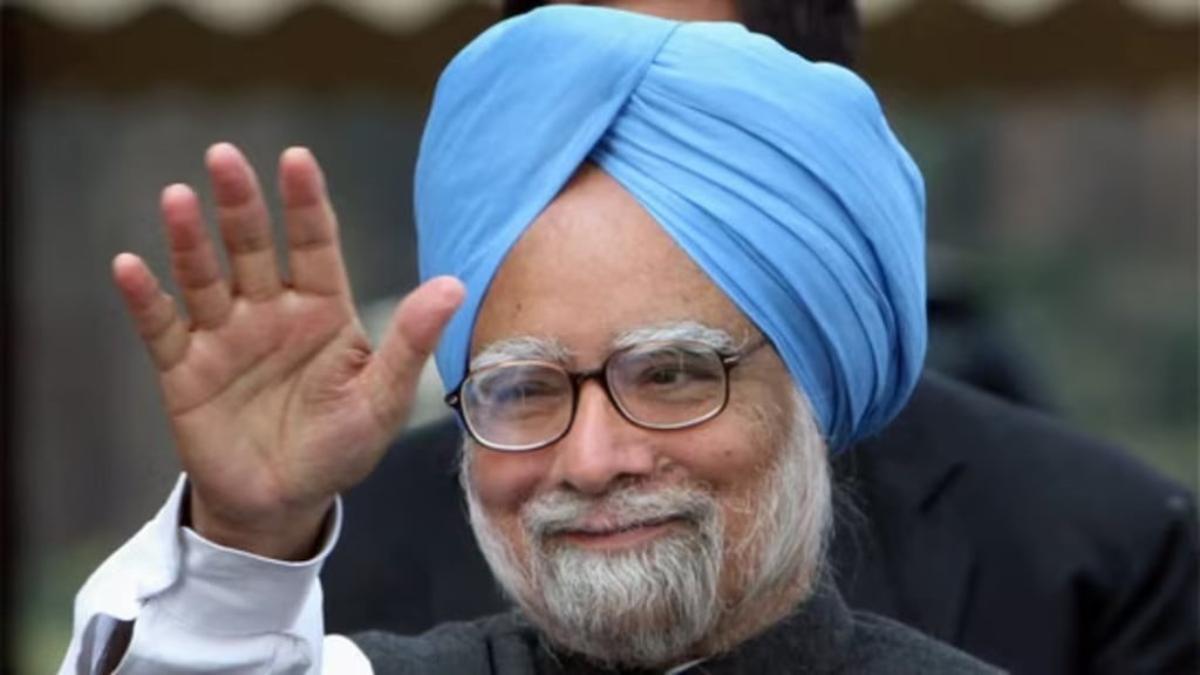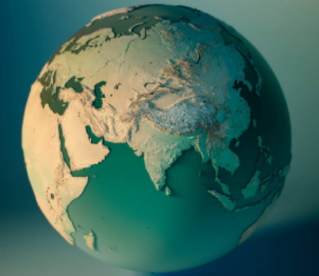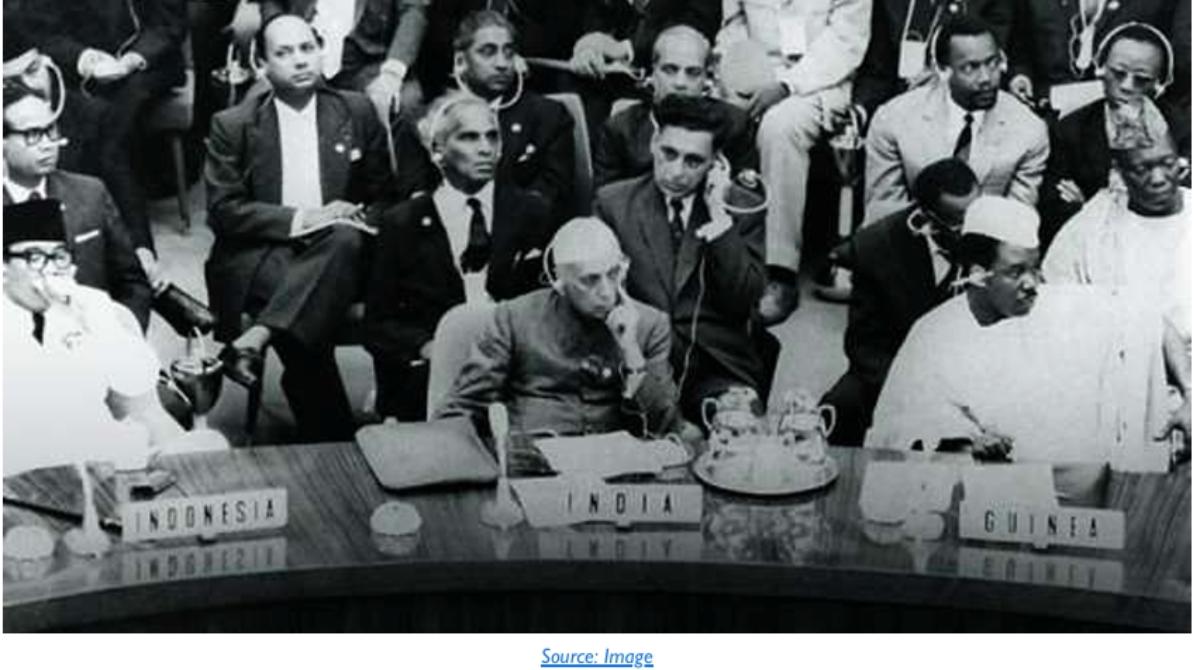Foreign Policy Research Centre in collaboration with Rajiv Gandhi Institute for Contemporary Studies
At the outset, Prof. Mahendra Gaur, Director of Foreign Policy Research Centre, welcomed the panellists and introduced them to the audience. He then highlighted the significance of the consultation given the historic ties between India and US, and hoped the distinguished panellists would shed insights into this long and complex relationship. Then, on behalf of RGICS, Professor Somnath Ghosh thanked the panellists for taking time off their busy schedule to share their thoughts on this important topic. We present below excerpts from the presentations of the various speakers of consultative process:
Mr Dipanjan Roy Chaudhury
When we’re talking about India-US Relations: Challenges and Way Forward, I guess in everybody’s mind will be the recent visit of President Trump to India and people who definitely compare his visit with the last three visits, which is President Bush, which really transform this relationship and followed by President Obama’s 2010 visit and in 2015 visit.
Donald Trump’s visit to India – Feb 2020
So, in my understanding, when you negotiate a trade deal with a country like US and that (too) with President Donald Trump, and when India was giving concession before to make the deal happen, he was asking for two more things. He went a step backward to have the maximum. That’s his style. (But) he knew he is not getting the big deal, but he still came here. To get that Diaspora connect.
As General Katoch has pointed out, the Indian diaspora in US is slowly making the difference. You know it’s a second biggest diaspora after the Chinese and for US it’s slowly making certain differences in certain states beyond the western and the eastern coast and he probably needs your support in long term. Indians are getting into the Congress, the state Congress as well as in the Federal Congress and he probably has realized that the Indian diaspora in the coming years. He may not be there; he’ll probably get it or may not get a term (but) looks like that he will get a term. But he knows the value of this Diaspora which is making the relationship beyond the leadership. Secondly, he has a personal connect with Prime Minister Modi. Prime Minister Modi himself believes in, I guess, personal chemistry and this man also believes in personal chemistry.
I would focus on one only one aspect of this visit – which we didn’t give due attention – which is about the Indo-Pacific partnership, because this is largely remains in the intellectual domain; so, most media doesn’t focus on it per se. …The US is inviting India to join something called Blue Dot initiative. Well, Australia, Japan, are already partners. How will this shape up? My understanding is, India is cautious on this and probably will take time, if at all. But beyond that, there is a convergence of views on the Indo-Pacific region.
Just the last word on the trade deal. I guess trade deal or not, Indo-US trade is on an upswing. We are buying more oil from US; there is US investments in India. And these are happening beyond the trade deal. So whether we clinch a deal, whether we clinch an investment treaty, whether we clinch an FT or not, to my mind it shouldn’t be seen as the be all and end of a deal at all, because the trade is increasing, our purchases will increase, the US investments in India is going to increase. Thanks.
Ms Smita Sharma
I’ll talk first about the India-US relationship and then look at it from the perspective of the Trump visit, and then talk about the challenges.
As far as the India-US relationship is concerned, without a doubt it is one of the most important relationships for India today. And nobody should have any qualms about accepting it whatever may have been the Cold War history when you saw India aligned with the Russians. In the past two decades (Indo-US) relationship may have seen our fair share of ups and downs, but this relationship has evolved in a way. I think there is no zero sum game here anymore, and which is what works to the advantage of both these countries.
When you talk about two democracies – one being the largest, and the other being the oldest – because there are so many pillars in this relationship today which integrate these two countries. People to people relationship as General Katoch talked about, and I will expand on those a bit more. There was also a question about the diaspora and their seeming intervention in American politics. But you have the other core areas.
I think one of the areas that has taken up massively in this relationship has been defence. What has happened is India acquiring at least $18 billion of arms and ammunition from US in the past twelve years alone. Now this is a significant. Until some time back, we were looking at an Indian arms system, Indian military software, hardware system where you were acquiring at least 72% to 75% of items from Russia. Now this has come down to almost 60%. A lot of it is also because India still continues to acquire a lot of spare parts for the Russian equipment that it already has.
But the shift has been in the aviation sector…In aviation today the doors have opened to acquire equipment and aircraft from the Americans, which was earlier closed because of that entire phase of sanctions. That has now opened up and a lot of India’s critical platforms are actually now of American make. And as you go forward, you also have India expanding its weapons basket acquisition from. The Europeans, from France, from UK, from Israel. The dependence on Russia in a way has seen a significant transformation. So I think this is one of the key areas for India US relations.
Today we talk about Indo-Pacific, which was the Asia Pacific, but US realigned, recalibrated and then gave it the name of Indo-Pacific so the US Pacific Command is now called the Indo-Pacific command. If you see the American presence of the bases is far more from Indonesia to Australia. Russians don’t match up to it. The number of exercises – bilateral, multilateral – that the US and India are engaged in today. They can be anywhere between 20 and 24, and with Russians you have one or two. So that’s significant transformation of opening up and which is why you’ve had two crucial foundation agreements signed. LEMOA which is about logistics exchange agreement, so that you know you can use each other’s bases for refuelling purposes, for logistic sharing. The other is COMCASA to improve interoperability between the forces as they go in for the exercises. We are all hoping it will be signed somewhere this month itself. So I think defence is the one area where we have seen the two countries pick up a lot of steam and a lot of energy.
Talking about the third area, it would be energy. We are living in a time now where we have moved from non-alignment movement to what we call today our strategic autonomy. India wants to align with countries based on each other’s needs and interests. India’s energy needs have of course added. But from the times when India was importing largest crude oil source from Iran, now it has gone down to zero. India’s has now shifted a lot of buying LNG gas supply from the US. So as the US lands up and discovers more and more oil and gas supplies, the US will also play a crucial role in trying to keep the oil prices globally stable along with other countries including Saudi. The Canadians have been discovering a lot of gas. In fact they are keen that India should sign up. For our interests and, for a country of 1.3 billion, the energy needs are something where again US will play a key role.
The Nuclear Energy pact was in my opinion one of the most significant transformations in the India- US relationship that also changed the way the world sees India. All credit to George Bush who did a lot of heavy lifting for India to sail through but the agreement but then India came up with its domestic liability law which became a huge friction point between India and the US because the American makers of nuclear reactors were not comfortable with the idea that if tomorrow unfortunately that does happen, the liability for that they said should be fixed upon the operators of the reactors and not the makers of the reactors. So during this visit in fact we were expecting movement forward in terms of the nuclear commerce that hasn’t happened. Will touch upon it in a bit, but I think the essential part is that the bipartisan support that India enjoys, and let’s talk about it today.
The bipartisan support that India enjoys in the US in the American Congress regardless of whether it’s the Democrats or Republicans in power. That is a very very crucial component of this relationship and that is a component that the lawmakers and the leadership need to keep in mind as we continue to engage with each other.
Now coming to the Trump visit. I would say, every time you have a high level summit visit, it’s not possible to expect an absolutely big ticket item like a civilian nuclear deal being announced or the next steps in strategic partnership. But at the same time you do expect the visit to look concrete in terms of substance. In my opinion, substance in this visit is something that I found a little lacking at this point in time. Of course we did sign up for the $3 billion of acquisition of helicopters. But if you’re a member, the Ministry of External Affairs before the visit in fact announced that there would be broad discussions happening and we’re expecting at least five (agreements) to be signed.
Eventually what was signed were actually three MOUs. One was in the mental health sector. Second one was in the safety of medical devices and third one was between Exxon Mobil and Indian oil, but even that Indian Oil and Exxon Mobil agreement was about LNG infrastructure plant in terms of parties of LNG. There has been a lot of friction. That’s been happening between the two sides because India somehow was not comfortable buying LNG at a fixed price from the Americans because they think that they’re going to run into losses.
Dr. Chintamani Mahapatra
When an American president comes to India, this in itself is significant. And wherever he goes, whoever may be the President of the United States, if it was just a particular country, and moreover, if it is a stand-alone visit; that itself is very, very important. Soon after he (President Trump) made the visit and returned, he tweeted, “Great India, great successful visit”. Around the same time Prime Minister Narendra Modi made a statement here that it was a path-breaking visit by the American president. Now the question is if Trump said it was a successful visit, was it successful for India? We have to think if Prime Minister Modi says that this was path breaking. One can debate it in very many ways.
Let me begin by saying something about what the critics would say. They said, Donald Trump condemned India, criticized India in very many ways and then he hit India. Before he comes, he says he will engage with the tariff King; he comes to India and says the same thing. In Washington, DC, sitting next to the Pakistani prime minister he would say, I would like to mediate in your Kashmir dispute with India. As the report says, he comes to India and says the same thing. Then in India he praises the Pakistani prime minister: “He’s a good friend and together we are combating terrorism”. He says hardly anything about Pakistan and China, the countries of concern for India. So what really good did the visit do? He came all the way; people waited for last two years. Indians and Americans are negotiating a trade deal. He imposed high tariff on India, retaliated on 28 items of imports from the United States. He comes here, no deal was signed. And when no deal was signed, he said some big deal was in the making. And the government of India also says not to worry, wait, things will improve. We need not be in a hurry to sign a trade deal.
Point number two. Yes, he signed $3 billion dollar deal of some helicopters and all. Here what he did not say is important. He didn’t say, don’t buy S-400 from Russia. He kept quiet. I think that is a very good news; and he thinks Indians are going to buy more. After all, they are not thrusting on India, that you buy this, you buy that. They are offering and we have the choice to buy or not to buy. So if that particular deal was signed, in my view it is okay. As part of the trade deal is concerned, I think I’ll go by what our ministries have said and what Trump said before he would land. There are difficult issues like taking India out of GSP; then you have the H1 B visa issue; and then you have the data localization issue, totalisation issue. These are critical issues. He may take India off the GSP list. It’s not that he is certifying that India has now become a developed country. No, that is business; it is negotiation, it is bargaining. It is hard. So we should not hurry up and sign a deal, simply because there is a President visit right now to India.
On Kashmir. Many people said, “What is he going to say on Kashmir? He said he would like to mediate.” My answer is what he did not say about Kashmir is important and we should take note of it. Simply because he’s offering his mediation we need not be upset about it. After all, without Indian agreement and willingness, he cannot mediate. He did not challenge the legal validity of abrogation of Article 370. That’s a very big thing. Trump administration has not challenged whatever Government of India did in Kashmir. When Pakistan and China together were trying very hard to discuss Kashmir issue in the UN Security Council, ultimately when India’s succeeded in preventing that, there was strong American support. In the FATF, when they’re keeping Pakistan on the hit list, even now, – and another round of discussion is going to take place in June – and if that was possible, it is simply not because of India’s diplomacy with other countries, the American support was really important.
How about China? This fellow would never criticize China in India. No, the kind of signal he sent to China in my view is important. Like for example, just to give you one example. The Chinese are pretty upset about it. The concept of Indo Pacific: they think India is being highlighted. US-Pacific was different. They don’t like it at all. I have interacted with very many Chinese people even at the government level and the university level. They don’t like it, but the joint statement that was issued. If you take a look at it. Out of 21 small, paragraphs, five paragraphs were devoted to Indo Pacific. Number two, he did not criticize India for allowing the Huawei for 5G tender. And number 3, when he mentions about the BRI. And saying that the US would always support a transparent deal as far as BRI related investments are concerned and there should be a rule based transparent policy, particularly on giving loans etc.
“Pakistan must not allow its territory to launch terrorist attacks”. It is written in a joint statement. If you run your eyes through the report in the Pakistani media on of what transpired on Kashmir, they all talk about what he said in Ahmedabad and ignore what is there in the joint statement. So overall, if you see all these things, I think it was a very, very useful visit by an American President. They are increasingly taking note of India. In my concluding observations: What next? This is my view and it is the view of many other people also. Prime Minister Modi goes to Houston, and in a way endorses President Trump’s candidates. Now he comes to Ahmedabad and much bigger – double the size of the people in the audience. Somehow down the line, it is sending a signal to the Democrats that Indians are now siding with a Republican President.
Number three: the critical issues like GSP and all the trade deals are really serious. We cannot put a full stop; that Donald Trump has told us a big deal in the offing. I think critical issues are at stake. And American politicians particularly would not understand critical aspects of the political economy of the world. Generally, the American congressmen – senators also at that level – they think, “Oh, Americans are doing a great job giving assistance to many many countries, third world countries, developing countries… Why should we pay our taxpayers’ money to Tanzania, Ghana, South Pacific islands? Questions are raised. You know American debate. For every one dollar given in assistance to the developing countries, ultimately the Americans will get $4 in return over the years. It is not just free doling out; no free lunch in the United States. So there are many issues even on Indo-US deal. You know it is not one-sided at all. Americans get benefit out of it. They’re not at all bleeding hearts: is garib Indians ko madad karo type – no, it is hard economics. So we need not be in a hurry. But we have to play our cards very well in times to come.
Finally on Afghanistan. Many people say Americans are already doing some dealing with the Taliban. And what is going to happen to India’s future in Afghanistan? In certain areas where we need to cooperate, collaborate: particularly in the area of combating terrorism.
Maj Gen. Dhruv Katoch
There are just a few points I would like to give us a starter. The United States is the only superpower today. It is the only country which can impose sanctions on anybody because (it has) the financial controls – where financial dealings are done with the US dollar and the control of the US dollar is with the United States. They control everything that is in a very, very broad perspective. Now with regard to Indo-US partnership, I look into four basic pillars.
The first thing is the human relationship – the people to people dimensions, leadership to leadership dimensions, including the Diaspora. The second dimension is the political imperatives of whichever country. The third dimension is the economic side of it. We’re getting into very stronger defence cooperative with the United States. But then the economic side of any relationship is very important. Lastly, the most important of all is the strategic convergence and divergence which really make the relationship. While people to people relationships may be good or bad or indifferent, ultimately it is the strategic convergence which make the relationship. If you take away the strategic convergence nothing else will matter right. You may have very good people to people relationships (but) they only carry that far.
…If I have to give any credit to the government of the last six years on any one field, it won’t be the economic field, it’ll be the foreign policy field. I think the one place where we have really succeeded is the foreign policy field. Now Professor Chintamani rightly said, so many things haven’t happened. Obviously they haven’t happened. Diplomacy is not in making things go right. Diplomacy is preventing things from going wrong. Let us put it that way; it is basically conflict management. There is no way in which you can win. You can simply cut your losses.
The second I aspect I want to talk about is the defence aspect. And then I want to go into strategic convergence and divergence, which I will end with that. You see, I think the defence partnership has taken off in grand way, in a really great way. What was so important and why is it too important. Former President Abdul Kalam, made a very pertinent statement, he said. We import 70% of our defence equipment and we just manufacture 30% and he said we need to reverse it.
Technologically, I think this assistance now which we are going to get with the US, especially with BECA coming up the 4th foundational agreement. I think if we can have that cooperative deal together by which we can start manufacturing together. We have a great deal to offer in terms of software and space technologies which we can share with the Americans. So it’s not that it’s going to be a one-sided traffic but then technology, I think we can get a great deal of it too.
But now I want to talk about the strategic aspect and there are three things, which I think that we need to, and here I want to delve into it a little bit. The first is the pivot to Asia. Now why was this pivot to Asia? You know when we talk of a pivot to Asia, we are really meaning that you’re getting towards the Central Asian systems, you’re getting on to the Indian Ocean and the South China Sea. Now why was this pivot necessitated? And I think it had something to do with energy resources. For the first time America found it was not dependent upon West Asia at all. So America became self-sufficient in energy and now America is exporting energy.
Number two, when they say that the 21st century is the Asian century, it is because sometime this year or last year at some point of time, the economy of all the Asian countries combined exceeded the world. So the shift to Asia is very dramatic. There’s going a purchasing power parity, and not in real terms but BP and in PPP terms. You know the economic shift is bigger here. So if you’re looking at an economy that is growing every year and the gap between Asia and the rest of the world is going to keep getting bigger and bigger. That is why it is called the Asian century.
Now, how does Asia get its resources? The complete dependence of the world trade now is shifting to the Indian Ocean and any disruption on the Indian Ocean has an impact on world trade. So the
shift to Asia and the Indian Ocean region had great strategic importance for the world and for the United States. If you look at the map, India’s centrality as part of the Indian Ocean is clear, and the fact that India’s economy is growing, and we can afford to do it. I think we are in a position.
Now I’ll just talk about a few divergences. I think when we’re looking at the Afghanistan part region, there is a divergence. When this question came up that the Americans will withdraw I made it very, very plain that America leaving Afghanistan is not good news for India. Now whether they will leave or not, that’s the million dollar question as Prof Chintamani has said. They may not leave. I remember when President Obama was the president and they were having a drawdown and Obama in his speech said, we are going to pull out of got it off Afghanistan. I was heading the Indian Army’s think tank and the American delegation had come there and I told them, you can’t do it, and the American said, “Our president has ordered it. We will do it”, and I told them you can’t do it. They couldn’t do it.
The question is, there is a logic to what is happening in a particular area. So if the Americans withdraw then what is the situation going to be? What is the situation they’re going to leave behind in Afghanistan? You have got two people who are fighting that particular conflict as of now. One is the Afghan national security forces that is the government forces, with the police and the army, and you on the other side is the Taliban, which is supported by Pakistan. The public really doesn’t really matter. If you go to Afghanistan and ask any common Afghan which is the country which you like the best, India is number one. And which country which you hate the most, Pakistan comes number one. They hate Pakistan more than they hate the Americans. But will that make a difference? Honestly, it won’t really make any. The public opinion of Afghanistan is not going to make a difference, that’s a reality in Afghanistan.
But I think we must be very concerned about our own interests, which way our interests lie, and to think what we really need to do. You get your economy going, get your defence preparedness up to the appropriate shape too. And then of course, everything else will fall into shape, and hope the Americans can help us in getting these two things right. I think these will be the challenge for our political leadership for our diplomats, and for our civil society.

